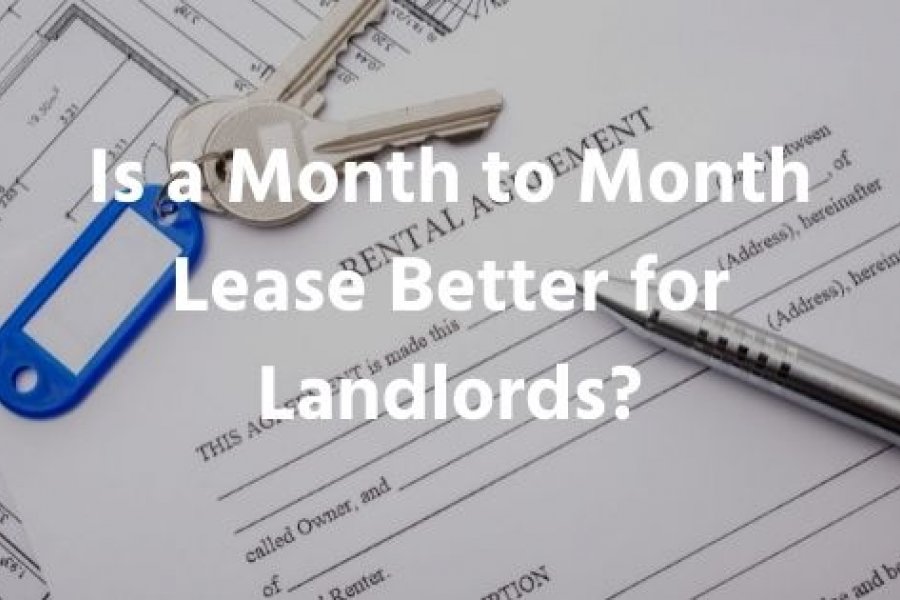
A month-to-month lease is a short-term lease. It’s legally binding and runs every month until either party chooses to terminate it by providing a one-month notice.
Usually, landlords use this type of agreement to end their tenant’s leases when they expire. Nevertheless, it’s also possible for both landlords and tenants to sign it from the start of the tenancy.
But, is a month-to-month lease better for landlords? Here’s everything you need to know in this regard!
Pros of a Month-to-Month Lease
Are you looking for some flexibility in your lease agreement? If you are, a month-to-month agreement is ideal. You may be able to avoid any long-term commitments in certain situations. For example, if you’re planning to sell your property soon or if your tenant is looking for a temporary residence.
The following are additional benefits to having a month-to-month agreement:
More Control Over Who Rents Your Property
Unlike a lease that binds both parties for an entire year, a month-to-month lease comes with some flexibility. All you have to do to terminate the agreement is serve the tenant with proper written notice.
If you’re just getting started as a landlord, it can be a great way to test the waters before making any long-term commitments. You can also make use of this time to gauge what works and what doesn’t.

In North Carolina, to be specific, you can increase rent on a month-to-month tenant at any time so long as you serve them a 7-day notice.
There are No Penalties for Terminating the Agreement
Normally, breaking a lease attracts some penalties. After all, a lease is a contractual agreement that binds both landlords and tenants to its terms for a certain duration of time.
This is, however, not the case with a month-to-month agreement. Any party can terminate it as long as they have provided the other party with proper notice.
In North Carolina, you’ll need to provide your tenant with a “Notice to Vacate” to end a month-to-month agreement. State law requires that you provide your tenant no less than 30 days’ notice for termination.
Can Make Changes to the Terms of the Agreement
While this is also possible with a long-term lease, you must obtain your tenant’s consent first. Alternatively, you must wait until the term of the lease end to make changes to it. This can take a whole year.
But with a month-to-month agreement, you’ll be able to make changes monthly. For example, you may be able to implement a rent increase during this time without the risk of losing a tenant.

You Can Retain High-Quality Tenants
It’s in your best interest to rent to quality tenants. That is a tenant who pays rent on time, cares for your property, and intends to renew their lease multiple times.
With a month-to-month lease, if you aren't satisfied with a tenant's behavior you aren't contractually tied to them in the same way you would be with a long-term agreement.
Cons of a Month-to-Month Lease
Despite their many benefits, month-to-month agreements aren’t without faults. The following are some reasons why you might not want to consider having them:
There’s an Element of Uncertainty
In some situations, having a flexible end date can be desirable. But, with flexibility comes a lot of uncertainty. You may be able to find a dream tenant, however, there is no guarantee that they will stay there for a while.
The Notice Period May Not be Sufficient
Of course, once a tenant leaves, you’ll need to find a replacement as soon as possible. But with only 30 days to do so, that can prove stressful for you. The limited-time can mean more pressure for you and can impact your ability to find suitable tenants.
The Rental Income May Not be Stable
Having great tenants is undoubtedly a win. However, keeping them only on a short-term basis cannot be comparable to having them long-term. If you have higher turnover rates, this can impact your ability to generate consistent rental income.

How Does a Month-to-Month Lease Differ with a Standard Lease When it Comes to Renewal?
A lease usually runs anywhere between six months and one year. If you’re interested in renewing it, you must send the tenant a lease renewal notice at least 90 days before the lease ends.
In some instances, landlords opt to extend the lease with a month-to-month agreement instead of signing another fixed-term lease.
Do Landlords Have to Sign a Month-to-Month Lease?
Yes, for any rental lease agreement to be legally binding, both you and your tenant must sign it. The only exception to this would be if the lease has a Holdover Clause.
With the Holdover clause, the lease continues monthly even after the lease expiration date. And since it’s written and already part of your existing lease, there would be no need to sign a new one.
How Does Ending a Month-to-Month Lease Work?
To end the month-to-month lease, either party must provide the other notice of at least 30 days. The notice must be written and must be delivered through certified mail.
Summary
After considering the pros and cons of a month-to-month, all that’s left to do is draft your agreement. If this is your first time being a landlord, you may want to seek professional help in drafting it. An experienced property manager will know exactly what terms to include and will ensure it abides by local and state laws.
Schambs Property Management is a proven and trusted property management company serving Wake County and the surrounding areas. Get in touch!